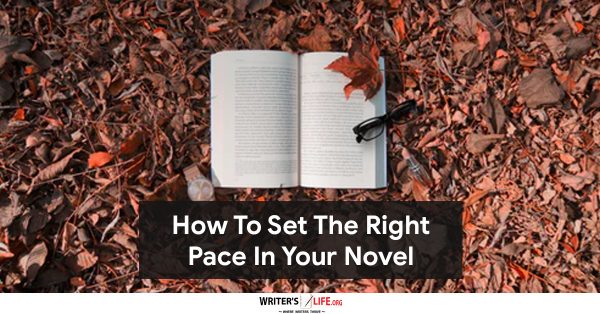- How To Tackle Jealousy In Creative Writing
- Common Submission Mistakes
- How To Stop Your Blog Becoming Boring
- The One Thing Every Successful Writer Has In Common
- How To Make Yourself Aware Of Publishing Scams
- Why Almost ALL Writers Make These Grammar Mistakes At Some Point
- 5 Tips For Authors On How To Deal With Rejection
- Top Mistakes to Avoid When Writing a Novel
- How to Avoid Common New Writer Mistakes
- 10 Mistakes New Fiction Writers Make
How To Set The Right Pace In Your Novel

When it comes to writing a successful novel, getting the pacing right is imperative. However, this is not always as easy as it may seem, and learning how to get the pace right can take time and practice.
What is pacing?
The pace of your novel is the speed at which your story unfolds. As the author, you have control over how quickly or slowly, the action takes place and how your story progresses. Different types of genres call for different pacing, and it is vital to get it just right so your story ebbs and flows, so that you keep the reader hooked, but also so that you don’t reveal too much too soon.
So what are some useful tips to follow to ensure you get the pacing right?
Make a plan
Proper planning can be critical when it comes to creating the correct pace. By plotting out your novel, the action, and the rise and fall of the story, you will be able to see how your story unravels and whether there are gaps or lulls in the action that might go on for too long and lose the interest of your reader. While the entire novel can’t be moments of intense action and adventure, it’s essential to include enough of them to keep the pace up, and the reader excited to continue reading.
Think of your pacing in units of time
It can be helpful to break your novel down into separate scenes, each of which should contain a critical plot point or interaction between characters that is significant. Each unit should have highs and lows where the drama becomes more intense, and thus the pace quickens - and parts in the aftermath of the drama, which can be slower. Remember, it’s as important to give the reader some respite in between climatic scenes where the tension and action lessens and allows them to absorb the drama that has just taken place fully.
Read the greats to help you understand pace
Some authors are revered as being masters of pacing - and you can learn a lot from them. Reading the most celebrated writers in your genre can help you gain a better understanding of how you should pace your novel and unravel vital scenes to keep your reader hooked.
Pay attention to the structure of your novel
The way you structure your novel has a significant impact on your pacing, not just in terms of plotting, but how you break down paragraphs and even sentences. Shorter sections are easier to digest, as are shorter sentences. So if you want to speed up the pace, use shorter sentences and keep your paragraphs tight too to help quicken the pace and keep the story moving forward. Similarly, if you want to slow your pace down, try lengthening sentences and paragraphs, and more detail, and even make chapters longer and shift the focus to a subplot to help slow things down.
By using the above techniques, you can help to make sure that you get the pacing right in your novel, and it keeps the reader reading right until the very end!
How do you make sure you get the pacing right in your novel - share your tips with us here!

Bethany Cadman - bethanycadman.co.uk





























